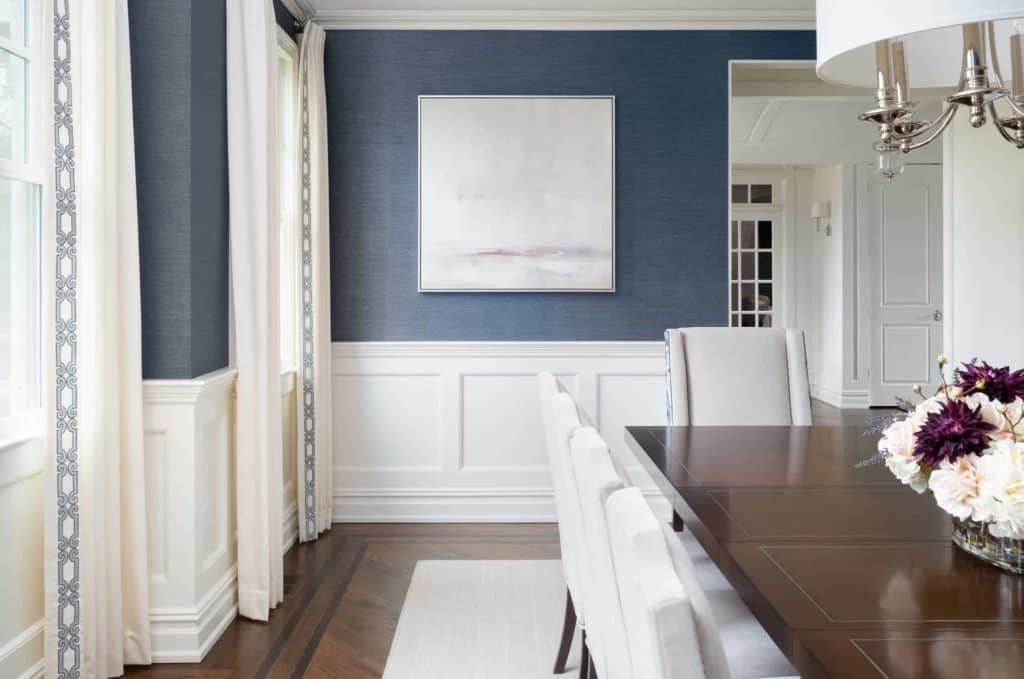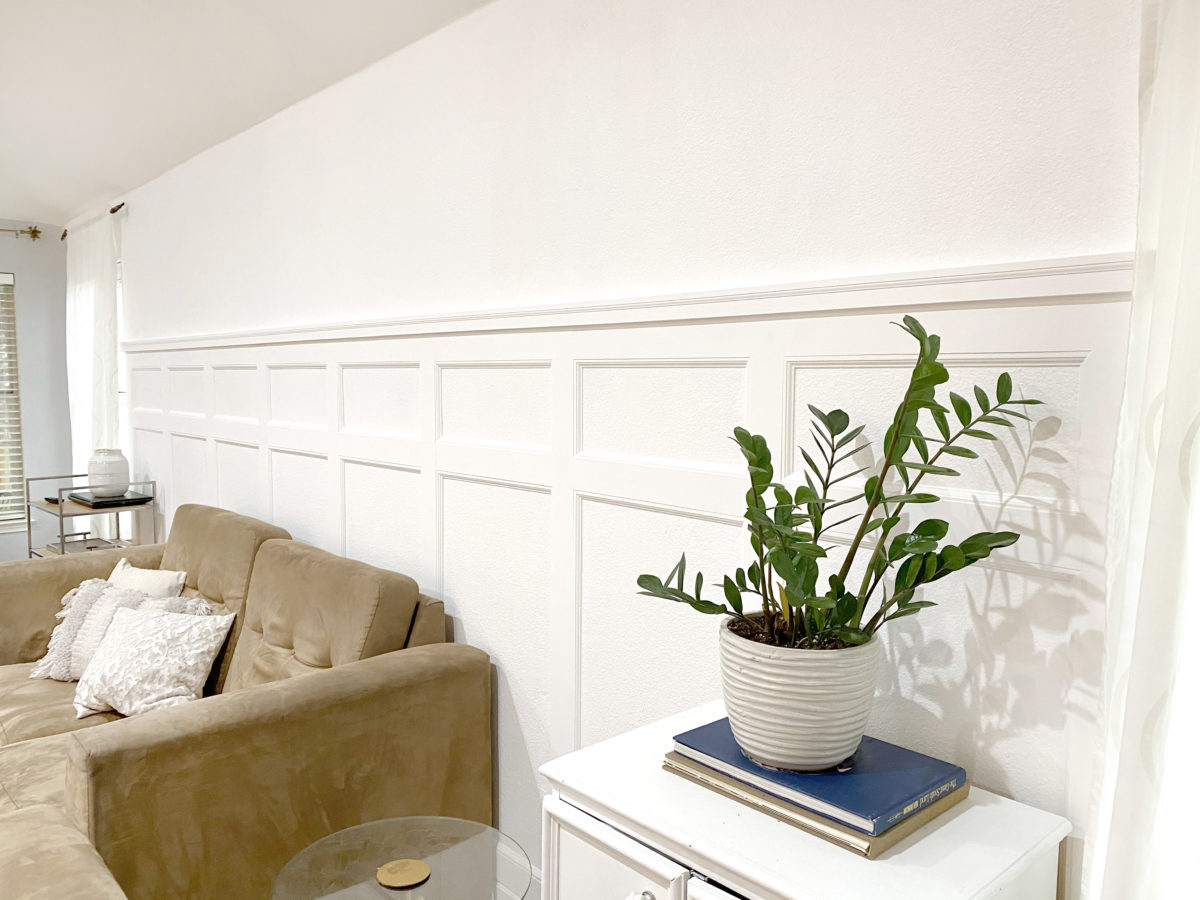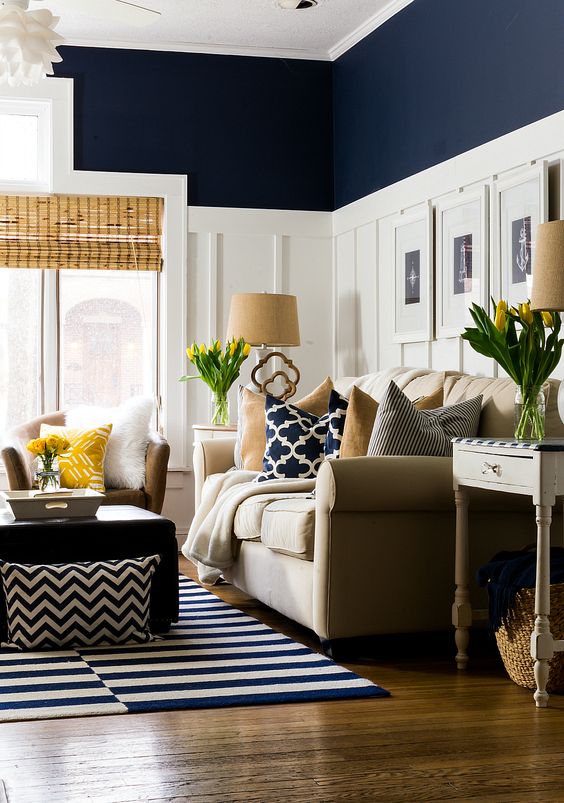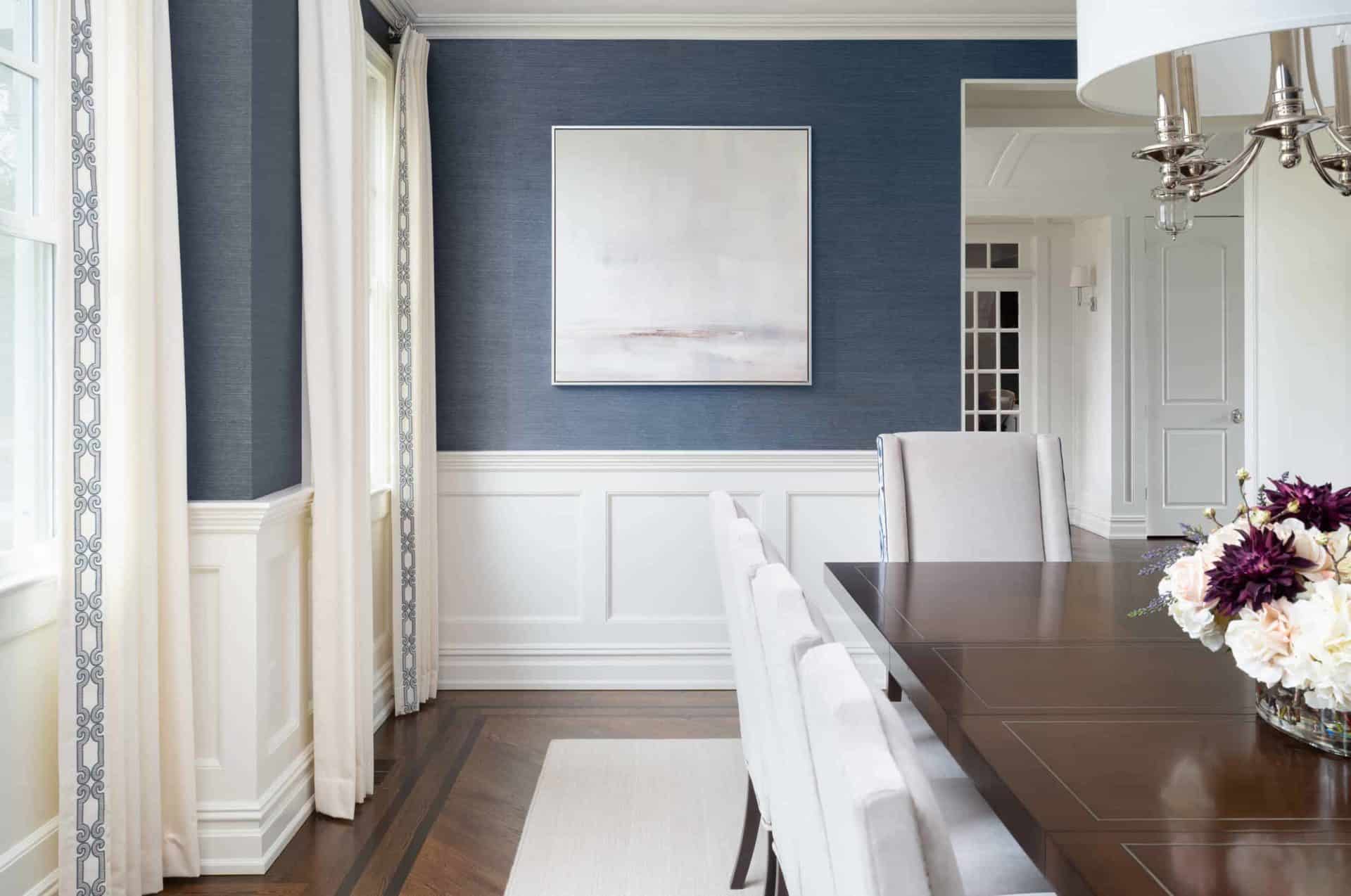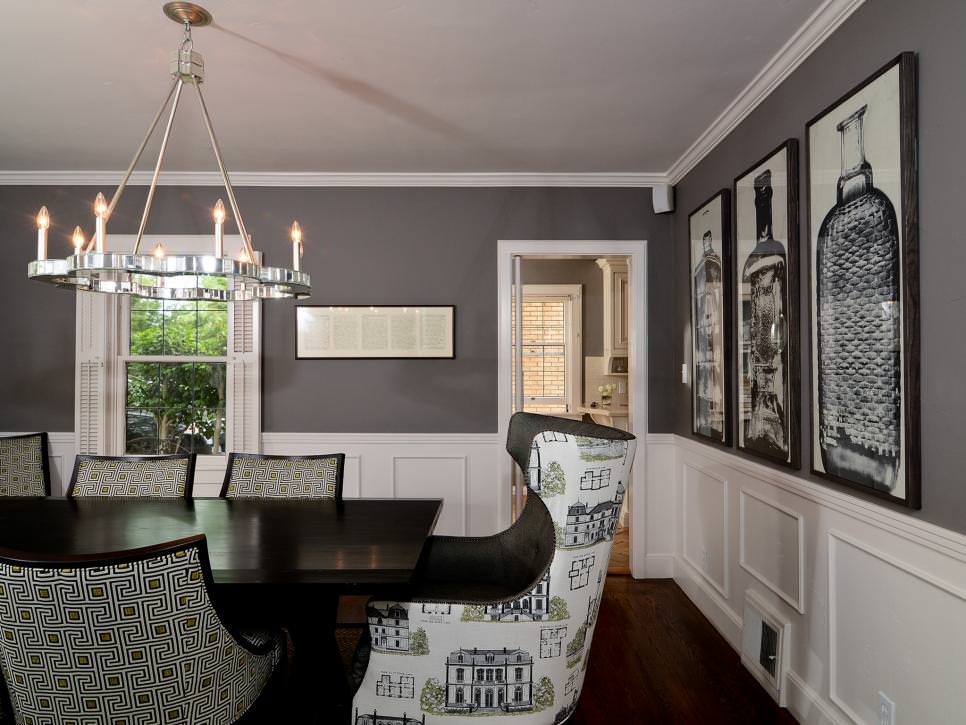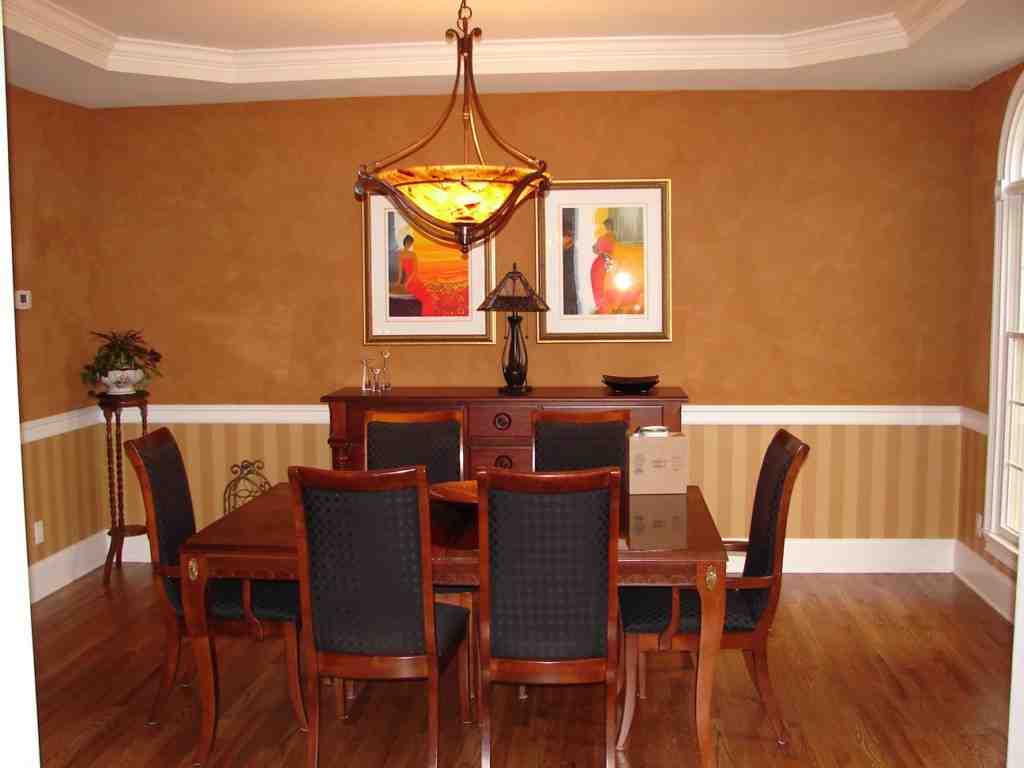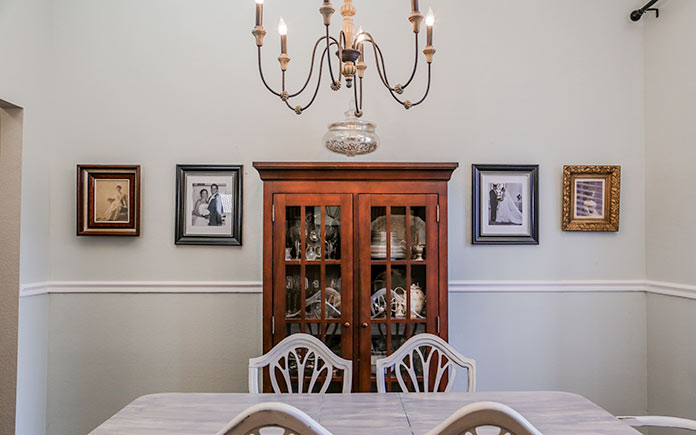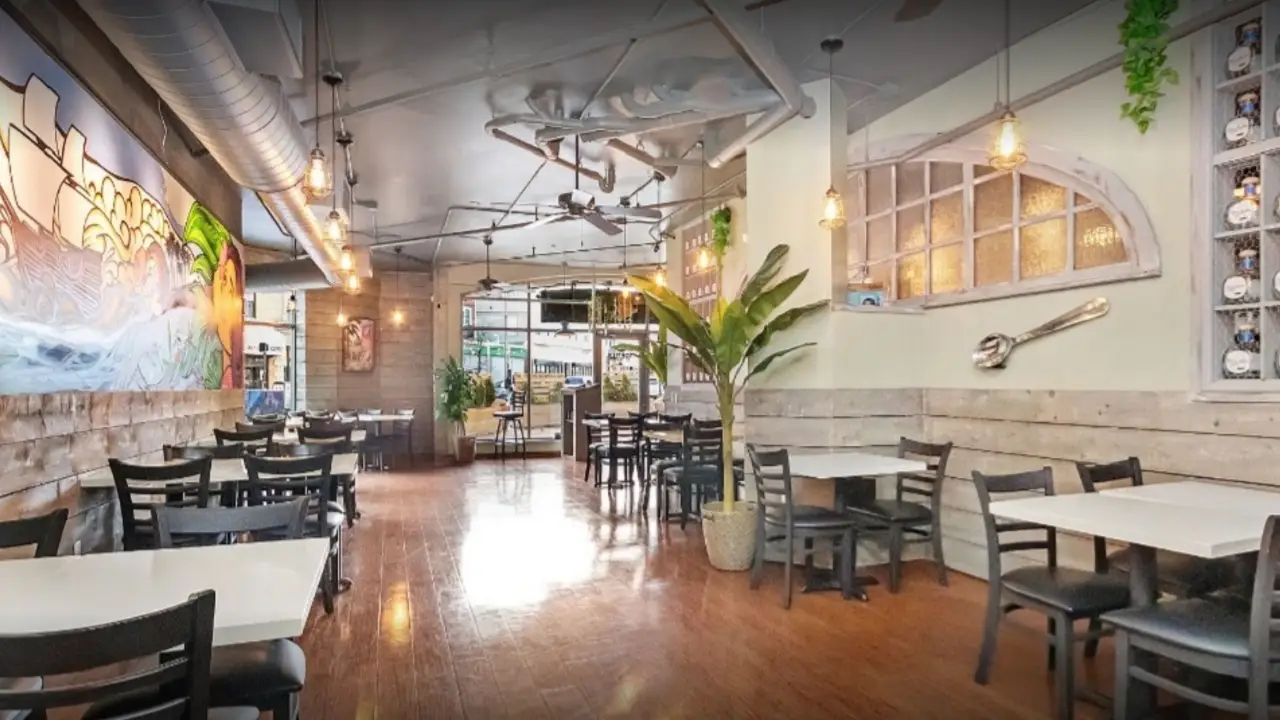Adding wainscoting to your living room and dining room can instantly elevate the look and feel of your space. Not only is it a beautiful and timeless design element, but it also adds texture and depth to your walls. Here are some wainscoting ideas to inspire your home renovation. If you have a traditional or vintage style living room and dining room, consider installing raised panel wainscoting. This type of wainscoting features raised panels with beveled edges, giving your walls a classic and elegant look. You can choose to paint the raised panels in a contrasting color to add more visual interest to the room. For a rustic or country style living room and dining room, consider using beadboard wainscoting. This type of wainscoting features vertical panels with ridged lines, giving your walls a textured and cozy look. You can paint the beadboard in a light color to brighten up the room or leave it natural for a more rustic feel.Wainscoting Ideas for Living Room and Dining Room
When it comes to wainscoting designs, the options are endless. You can choose from traditional designs like raised panel and beadboard, or go for more modern designs like shiplap or board and batten. The key is to choose a design that complements the style of your living room and dining room and adds to the overall aesthetic of your space. If you have a contemporary or minimalist style living room and dining room, consider using shiplap wainscoting. This type of wainscoting features horizontal boards with gaps in between, giving your walls a sleek and modern look. You can paint the shiplap in a bold color to make a statement or keep it white for a more clean and airy feel. For a coastal or nautical style living room and dining room, consider using board and batten wainscoting. This type of wainscoting features vertical boards with a horizontal board running across, giving your walls a beachy and relaxed vibe. You can paint the vertical boards in a light blue or navy color to add to the coastal feel.Wainscoting Designs for Living Room and Dining Room
There are several wainscoting styles to choose from, each with its own unique look and feel. Some popular wainscoting styles include classic, cottage, farmhouse, and modern. The wainscoting style you choose will depend on your personal preference and the overall design aesthetic of your living room and dining room. Classic wainscoting is characterized by ornate and elegant designs, while cottage wainscoting has a more rustic and homely look. Farmhouse wainscoting is all about simple and functional designs, while modern wainscoting features clean lines and a sleek and minimalist look. Choose the wainscoting style that best suits your personal style and complements your living room and dining room.Wainscoting Styles for Living Room and Dining Room
Installing wainscoting in your living room and dining room is a great way to give your walls a custom and high-end look. However, the installation process can be time-consuming and costly. It is important to hire a professional for the job to ensure that the wainscoting is installed correctly and seamlessly. If you are planning on installing the wainscoting yourself, make sure to measure and plan carefully beforehand. It is also important to choose the right materials and tools for the job. The most common wainscoting materials include wood, MDF, and vinyl, each with its own pros and cons. Make sure to do your research and choose the best option for your living room and dining room.Wainscoting Installation in Living Room and Dining Room
Choosing the right color for your wainscoting is crucial as it can make or break the overall aesthetic of your living room and dining room. If you have a small or dark space, consider using light colors for your wainscoting to make the room feel more spacious and airy. On the other hand, if you have a large and bright space, you can play around with bold and dark colors for your wainscoting. For a timeless and elegant look, consider using white wainscoting. This color works well with any design style and can make your living room and dining room feel more luxurious. You can also choose to paint the wainscoting in the same color as your walls for a seamless and subtle look. Alternatively, you can use contrasting colors for a more dramatic effect.Wainscoting Colors for Living Room and Dining Room
As mentioned earlier, there are several wainscoting materials to choose from, each with its own unique look and feel. The most common wainscoting materials include wood, MDF, vinyl, and tile. Each material has its own pros and cons, and it is important to consider factors like durability, cost, and maintenance before making a decision. Wood wainscoting is the most traditional and popular option, but it can be pricier and require more maintenance. MDF wainscoting is a more affordable and low-maintenance option, but it may not be as durable as wood. Vinyl wainscoting is a budget-friendly and water-resistant option, but it may not have the same authentic look as wood. Lastly, tile wainscoting is a unique and versatile option, but it can be costly and requires professional installation.Wainscoting Materials for Living Room and Dining Room
The height of your wainscoting will depend on your personal preference and the design of your living room and dining room. The standard wainscoting height is around 32 inches from the floor, but you can choose to go higher or lower depending on the look you want to achieve. If you have high ceilings, consider installing taller wainscoting to create a sense of balance and proportion in the room. If you have low ceilings, consider using lower wainscoting to make the room feel more spacious. You can also use wainscoting to create a focal point in your living room and dining room by installing it around a fireplace or entryway.Wainscoting Height for Living Room and Dining Room
The cost of wainscoting for your living room and dining room will depend on several factors, including the type of wainscoting, the materials used, and the size of your walls. On average, the cost can range from $5-$20 per square foot, including materials and installation. If you are on a budget, consider using MDF wainscoting instead of wood. You can also choose to install wainscoting on only one wall or in specific areas of your living room and dining room to save on costs. It is also important to get quotes from multiple contractors to ensure you are getting the best price.Wainscoting Cost for Living Room and Dining Room
If you are handy and have some basic carpentry skills, you can consider installing wainscoting yourself to save on costs. There are several DIY wainscoting kits available in the market that come with all the necessary materials and instructions for installation. However, keep in mind that installing wainscoting can be time-consuming and requires attention to detail. Make sure to research and watch tutorials before attempting to install wainscoting yourself. It is also important to have the right tools and to follow safety precautions when working with power tools.DIY Wainscoting for Living Room and Dining Room
Many people often confuse wainscoting with chair rail, but they are two different design elements that serve different purposes. While wainscoting covers the lower half of the wall, chair rail is a molding that is installed along the middle of the wall to protect it from chair backs or other furniture.Wainscoting vs. Chair Rail for Living Room and Dining Room
Benefits of Wainscoting in Your Living and Dining Room

Enhances the Aesthetic Appeal
 Wainscoting is a timeless and elegant addition to any home, especially in the living and dining rooms. It adds depth and dimension to the walls, creating a visual interest that can't be achieved with just a coat of paint. The raised panels, wood grain, and intricate patterns create a luxurious and sophisticated look that instantly elevates the overall aesthetic of the room.
Moreover, wainscoting comes in various styles and designs, allowing you to choose one that complements the existing décor of your living and dining room. From traditional to modern, there is a wainscoting style for every taste and preference, making it a versatile choice for any home.
Wainscoting is a timeless and elegant addition to any home, especially in the living and dining rooms. It adds depth and dimension to the walls, creating a visual interest that can't be achieved with just a coat of paint. The raised panels, wood grain, and intricate patterns create a luxurious and sophisticated look that instantly elevates the overall aesthetic of the room.
Moreover, wainscoting comes in various styles and designs, allowing you to choose one that complements the existing décor of your living and dining room. From traditional to modern, there is a wainscoting style for every taste and preference, making it a versatile choice for any home.
Protects Walls from Damage
 Living and dining rooms are high-traffic areas in a home, where accidental bumps and scratches on the walls are inevitable. Wainscoting can act as a protective layer for your walls, especially if you have young children or pets. The sturdy wood panels can withstand everyday wear and tear, preventing any damage to the drywall behind it.
Wainscoting can also protect your walls from water damage, particularly in the dining room where spills and splashes are common. The panels act as a barrier, preventing water from seeping into the walls and causing mold or mildew growth. This can save you from costly repairs in the long run.
Living and dining rooms are high-traffic areas in a home, where accidental bumps and scratches on the walls are inevitable. Wainscoting can act as a protective layer for your walls, especially if you have young children or pets. The sturdy wood panels can withstand everyday wear and tear, preventing any damage to the drywall behind it.
Wainscoting can also protect your walls from water damage, particularly in the dining room where spills and splashes are common. The panels act as a barrier, preventing water from seeping into the walls and causing mold or mildew growth. This can save you from costly repairs in the long run.
Improves Acoustics
 If your living and dining rooms tend to get noisy, wainscoting can help improve the acoustics in the space. The wood panels can absorb sound waves, reducing echo and creating a more peaceful and comfortable atmosphere. This is especially beneficial for those who love to entertain or have a large family, as it can make conversations and gatherings more enjoyable.
If your living and dining rooms tend to get noisy, wainscoting can help improve the acoustics in the space. The wood panels can absorb sound waves, reducing echo and creating a more peaceful and comfortable atmosphere. This is especially beneficial for those who love to entertain or have a large family, as it can make conversations and gatherings more enjoyable.
Increase Home Value
 Wainscoting is a feature that can add value to your home. It is a highly sought-after design element that can attract potential buyers and give your home an edge in the real estate market. It adds a touch of luxury and elegance to any room, making it a desirable feature for many homebuyers.
In addition, wainscoting is a long-lasting and durable investment, which can increase the overall value of your home. It is a feature that can stand the test of time and remain a desirable design element for years to come.
In conclusion, adding wainscoting to your living and dining rooms not only enhances the aesthetic appeal but also provides practical benefits such as protection, improved acoustics, and increased home value. It is a versatile and timeless design element that can transform any ordinary space into a sophisticated and elegant room. Consider incorporating wainscoting into your home design to elevate the overall look and feel of your living and dining rooms.
Wainscoting is a feature that can add value to your home. It is a highly sought-after design element that can attract potential buyers and give your home an edge in the real estate market. It adds a touch of luxury and elegance to any room, making it a desirable feature for many homebuyers.
In addition, wainscoting is a long-lasting and durable investment, which can increase the overall value of your home. It is a feature that can stand the test of time and remain a desirable design element for years to come.
In conclusion, adding wainscoting to your living and dining rooms not only enhances the aesthetic appeal but also provides practical benefits such as protection, improved acoustics, and increased home value. It is a versatile and timeless design element that can transform any ordinary space into a sophisticated and elegant room. Consider incorporating wainscoting into your home design to elevate the overall look and feel of your living and dining rooms.



